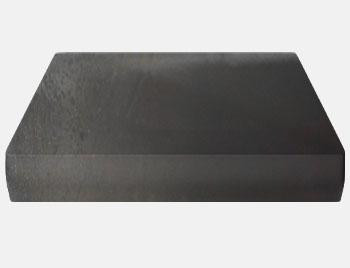How Hot Rolled Sheets Provide Cost-Effective Solutions for Construction
In the world of construction, the choice of materials plays a crucial role in determining the overall cost, durability, and effectiveness of a project. One material that has gained widespread attention for its versatility and affordability is the hot rolled sheet. These sheets are integral to many construction projects, from skyscrapers to bridges, providing the strength and flexibility needed for a variety of applications. In this article, we will explore why hot rolled sheets are a cost-effective solution for construction and how they contribute to high-quality, durable builds.
Understanding Hot Rolled Sheets
Hot rolled sheets are metal products that have been processed at high temperatures, typically over 1700°F (926°C), which is above the recrystallization temperature for most steels. This allows the steel to be easily shaped and formed into different sizes and thicknesses. The process involves rolling the steel through large rollers, making it thinner and longer. Once the steel cools, it becomes the hot rolled sheet used in many construction and industrial applications.
Because of the high-temperature processing, hot rolled sheets generally have a rougher surface texture compared to cold-rolled steel, but this is not a drawback for most structural purposes. The final product is strong, ductile, and, importantly, more affordable than cold-rolled alternatives.
Cost-Effective Benefits of Hot Rolled Sheets in Construction
1. Lower Material Costs
One of the primary reasons why hot rolled sheets are so popular in construction is their relatively low cost compared to other materials. The high-temperature rolling process is less time-intensive and requires less energy than cold rolling, which makes production more affordable. For construction projects working on tight budgets, hot rolled sheets offer a reliable and cost-effective material solution.
In addition to the lower initial cost of purchasing hot rolled sheets, their availability in larger quantities also makes them a great choice for large-scale projects, helping to reduce the overall expenditure on materials.
2. Easy to Work With
Hot rolled sheets are easier to manipulate due to their increased ductility, meaning they can be bent, shaped, and cut with relative ease. This characteristic makes them highly versatile for different construction uses, from framing to forming structural support beams. The flexibility of hot rolled sheets eliminates the need for more expensive custom-made materials, which would add significant costs to a construction project.
Because they are malleable, hot rolled sheets can also be used in a variety of applications, ranging from commercial buildings to bridges and infrastructure projects, further adding to their cost-effectiveness.
3. Reduced Processing Time
In comparison to cold-rolled steel, hot rolled sheets do not require as much processing. The simplified production process not only lowers costs but also means that they can be produced quickly and delivered on-site faster. For construction projects with tight timelines, the quick availability of hot rolled sheets helps avoid delays and keeps the project on budget.
4. Strength and Durability
Another advantage of hot rolled sheets is their inherent strength and durability, making them a great option for construction projects that require materials capable of withstanding high loads and pressures. Hot rolled sheets are particularly well-suited for projects that need structural integrity, such as the construction of bridges, skyscrapers, and heavy industrial buildings.
By using hot rolled sheets, construction companies are able to ensure that their structures are not only cost-effective but also safe and long-lasting. This durability minimizes the need for costly repairs and replacements down the road, offering long-term savings.
5. Reduced Waste
Hot rolled sheets can be customized and cut to specific sizes, helping to reduce material waste. The ability to order these sheets in specific dimensions means that construction projects can avoid the added expense of excess material. Additionally, the efficient use of materials leads to a more sustainable building process, which can be a key selling point for environmentally conscious developers and contractors.
Applications of Hot Rolled Sheets in Construction
Hot rolled sheets are widely used in construction due to their adaptability. They are commonly employed in:
- Framing and structural beams: Hot rolled sheets are often used for framing purposes, providing the support structure for large buildings and bridges.
- Pipelines and storage tanks: Their strength and ability to withstand pressure make hot rolled sheets a perfect choice for pipelines and large storage containers.
- Rail tracks: Hot rolled steel is also used in the manufacture of railroad tracks due to its durability and ability to withstand heavy loads.
- Building facades and flooring: The flexibility of hot rolled sheets allows them to be shaped into facades and used for flooring in industrial buildings.
These applications highlight the broad utility of hot rolled sheets across different aspects of construction, further contributing to their cost-effective appeal.
Conclusion
Hot rolled sheets provide a perfect blend of affordability, strength, and versatility, making them a staple in the construction industry. Their cost-effective nature stems from their lower production costs, ease of manipulation, and suitability for various structural applications. For construction projects that demand a durable, reliable material while staying within budget, hot rolled sheets are an excellent choice.
To explore high-quality hot rolled sheet options, visit Qatar Steel Factory. They offer a variety of options to suit your construction needs, providing the best materials for your project while helping you save on costs.

Comments
Post a Comment